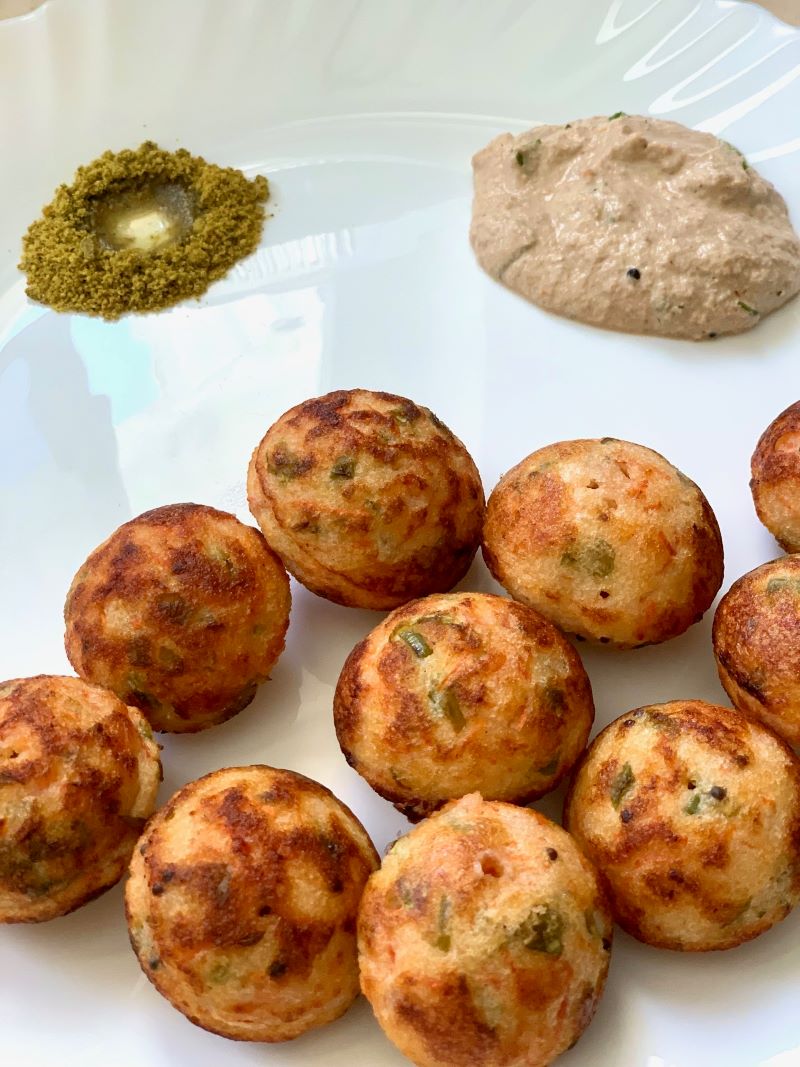
Vegetable Paniyaram or Appe/Appam as it is commonly known is a South Indian breakfast recipe made from idli/dosa batter and known as kuzhi Paniyaram in Tamil, Paddu in Kannada, and Gunta Ponugulu in Telugu. It’s the best way to use idli dosa batter if the batter has turned sour after a couple of days. It is perfect for kids too as it is extremely healthy, has a good dose of vegetables and looks colourful and attractive. My kid loves it and often asks for it especially in his school tiffin. He would take extra to school as requested by his friends. 🙂
Some years back my uncle gifted this cast iron Paniyaram pan (appe pan) to me and it has been my most treasured kitchen possessions. Since then my obsession with appe pan started and I make not only paniyarams in it but also fritters, little pancake balls, patties, bread rolls, falafel, kofte and dahi bhallas. Basically, anything that you need to shallow or deep fry can be made in appe pan with much less oil.
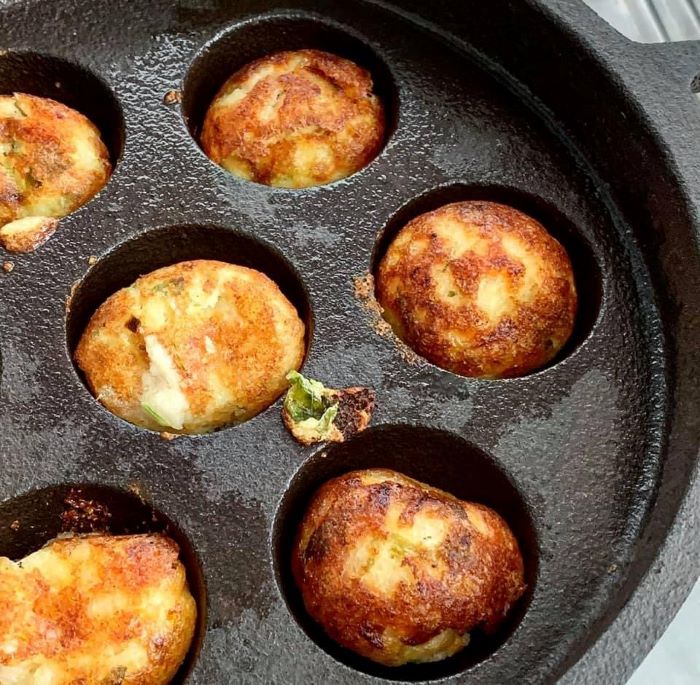
I like the instant version of Vegetable Paniyaram – it is quick to make with leftover idli/dosabatter. The last few cups of idli batter might not always yield soft idlis or make soggy dosas. I add mixed sautéed veggies with some spices into the leftover idli batter and it turns into flavourful paniyarams which I often serve with Coconut Chutney or Kara Chutney. They are really crispy on the outside and soft on the inside.
Check out this recipe below. If you have leftover Idli batter you can use that. In the recipe below I’ll share with you the recipe of fresh batter
Recipe: makes 20-25 paniyarams
Ingredients
For the Batter
- White Split Urad Dal: 1/2 cup
- Bengal Gram/Channa Dal: 1/8th cup
- Fenugreek Seeds: 1 tsp
- Rice: 1 cup
- Flattened Rice/Poha: 1/4th cup
- Water as required for the batter
- Rock Salt: 1 tsp
For Paniyarams
- Mixed Chopped or Grated Vegetables: 1 cup (I used onion, capsicum, carrot)
- Minced Ginger: 1 tsp
- Asafoetida/Hing: a pinch
- Mustard Seeds: 1 tsp
- Curry Leaves: Handful
- Oil/Ghee for Cooking
- Salt to taste
- Green chilies: 2 (optional)
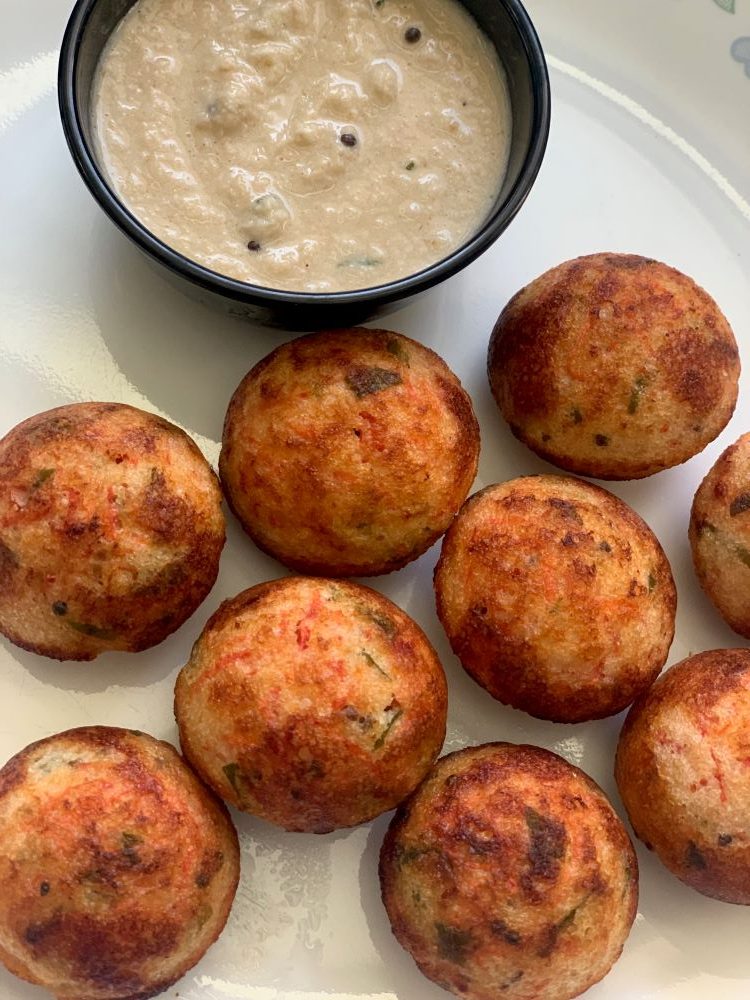
Instructions
- Wash and soak urad dal, channa dal and 1 tsp of fenugreek seeds for 3-4 hours.
- Wash and soak rice and poha for 3-4 hours.
- First grind the dals using water. Add water gradually to make a smooth thick but flowing consistency batter.
- Now grind rice and poha, again by adding little water at a time to make thick but flowing consistency batter.
- Mix both the batters in a steel or a glass bowl. Add rock salt. Mix well. Leave it for fermentation for atleast 8 hours or more at a warm place. The batter will rise and will become airy with tiny bubbles. If it hasn’t then leave for some more time.
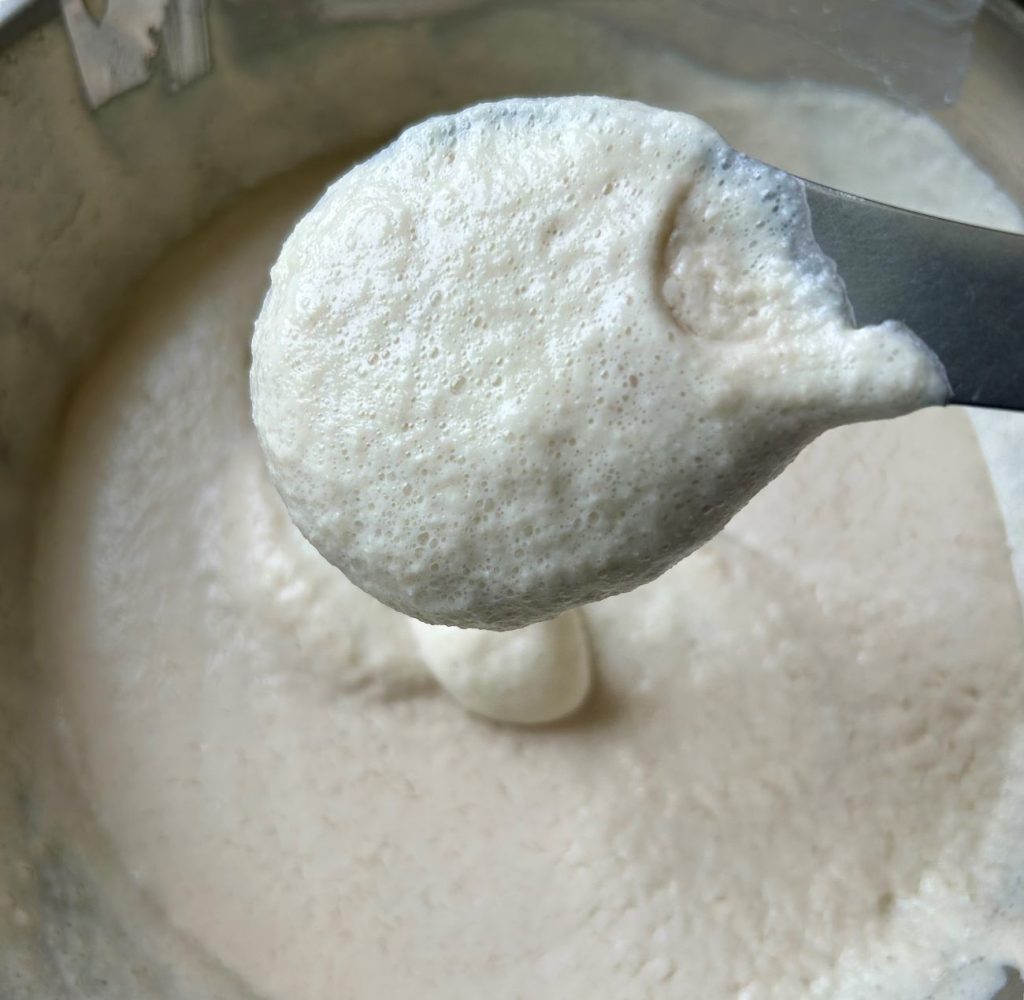
- In a pan, add a tbsp of oil. Add some mustard seeds & hing. Let mustard seeds splutter. Now add some finely chopped green chilies if using, curry leaves and minced ginger. Cook for few seconds then add finely chopped vegetables of your choice.
- Season it with some salt. Cook for 2 minutes on medium flame or till they soften a bit. Allow it to cool. Then add the sauteed vegetables to the fermented batter and mix gently.
- Now your batter is ready. The consistency of the batter is similar to idli batter. If it’s thick, add a bit of water. Check for salt. Heat Paniyaram pan to medium heat. Brush it with ghee or oil in each cavity and fill it with batter. Leave some space for paniyarams to rise.
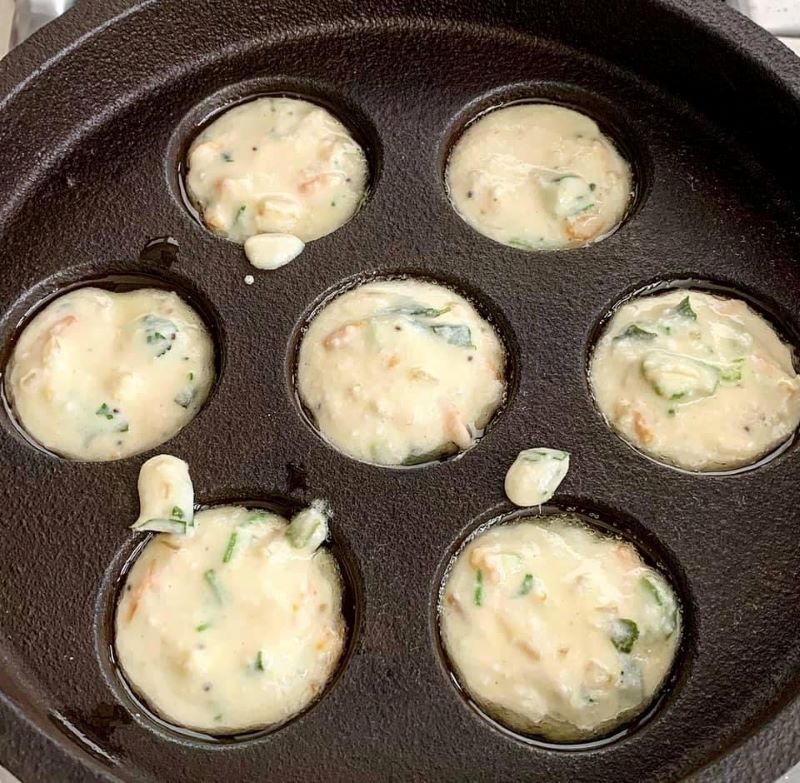
- Cover with a lid and cook on medium to low flame for 3 minutes or when the top has set, and edges have browned.
- Then with a help of a skewer or a knife flip the paniyarams and cook the other side for 2-3 minutes.
- Serve immediately with chutney of your choice.
Tips:
- Cook appe on low-medium heat or else you will end up with raw batter in the middle.
- You may use any combination of veggies minced broccoli, cauliflower, cabbage, or greens like methi or drumstick leaves works too.
- Use a paniyaram pan that has been seasoned well and used in the past. If not the paniyarams will stick to the pan.
Do give this recipe a shot. I am sure this will be your child’s and your family’s new favourite. If you try this recipe, do give us a shout out. Just click a picture and tag us on @masala.monk or use the hashtag #MasalaMonkRecipe and share on Instagram and Facebook. We would love to hear from you. 🙂









